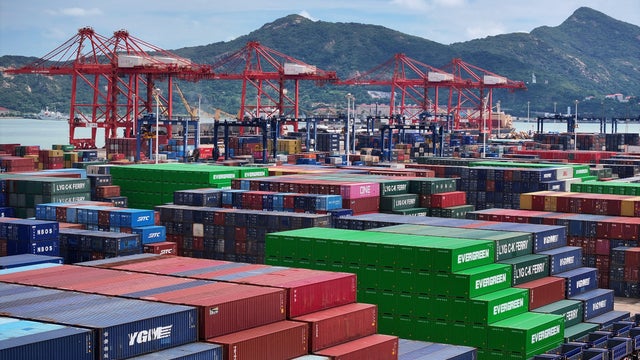

No response returned

S&P Global Ratings reaffirmed its AA+ credit rating for the U.S., saying that new revenue raised by the Trump administration's tariffs will help offset the tax cuts authorized by the Republicans'
The credit ratings agency, which issued its of the nation's fiscal health late Monday, said that it is holding its AA+/A-1+ rating steady, with a stable outlook.
The fresh analysis comes after Moody's Ratings, another large credit ratings agency, , highlighting investor concerns about the nation's growing debt and policy uncertainty sparked by President Trump's trade policies. While S&P highlighted a range of economic concerns in its report, including the impact of new tax cuts against a backdrop of already high U.S. debt and deficits, the agency also underscored the resiliency of the nation's economy as well as the new tariff revenue generated by the Trump administration.
"Amid the rise in effective tariff rates, we expect meaningful tariff revenue to generally offset weaker fiscal outcomes that might otherwise be associated with the recent fiscal legislation, which contains both cuts and increases in tax and spending," S&P analysts wrote in the ratings note.
The report added, "The ratings on the U.S. are based on its wealthy, diversified and resilient economy, with per capita GDP over $89,000 in 2025. Since the pandemic, U.S. growth has far surpassed that of its peers."
The White House didn't immediately respond to a request for comment.
The fresh ratings assessment comes as the U.S. economy is showing signs of a slowdown, with GDP decelerating to an during the first half of the year, compared with 2.8% in 2024. The job market also faltered in July, with employers adding a , to the Labor Department — far fewer than economists had forecast.
The weak jobs data suggests that businesses are delaying hiring amid the uncertainty created by the Trump administration's new tariff regime, which has been exacerbated by numerous and .
Amid those headwinds, the revenue generated from tariffs is surging: The U.S. government collected about in July, according to the Treasury Department. That amounts to a 242% jump in tariff revenue since July 2024.
While that new revenue will help bolster the nation's finances, it comes at a cost to American consumers and businesses, economists say. Tariffs are paid by U.S. importers — from to large retailers and manufacturers — when they accept goods from foreign countries at U.S. ports. Typically, those businesses then raise their prices to cover the costs of these duties, according to economists.
Because of that dynamic, tariffs are viewed as a tax on consumers by economists, with the Tax Policy Center, a tax-focused think tank, that the new import duties will cost the average taxpayer about $2,700 in additional costs in 2026.





